Ruskin Cave in 1877 - Thomas Rogers was residing at his home located across Dry Hollow Branch from Jewel Cave, less than a half-mile north of Ruskin Cave, on the same side of the ridge, just off of Yellow Creek.
(Excerpts from rootsweb biography of Thomas (Tom) Rogers)
In 1896 the Ruskin Colony of Tennessee City purchased over 800 acres of land that included the settlement of Cave Mills (The Great Cave), Pickett Cave (now known as The Hunt Cave), as well as the newly discovered “Stalactite Cave,” later renamed Jewel Cave by the Lawson family. Already on the property at the time of purchase was a grist mill and store and sawmill.
The Ruskin Colony was a utopian socialist colony and existed on the Tennessee City property from 1894 to 1896, when it moved to the Ruskin property. It stayed there until 1899, when it moved to Waycross, Georgia, and then dissolved in 1901. The Colony was named Ruskin after the English socialist writer, John Ruskin. Five Hundred Dollars was charged to become a member of the colony.
A huge three-story central building called the Commonwealth house was put up to house The Coming Nation Print Shop. The first floor housed the print shop, press room, stock room, and offices. On the second floor were the mailing rooms, editorial rooms, barber shop, living quarters, great room, and a library. The third room housed the auditorium and dining hall for 700 members.
A steam plant was constructed next to the central building to provide heat. A water reservoir was built on the hillside above the cave and gravity fed water to each home on the colony.
Among the enterprises were a chewing gum factory, a photo gallery, a steam laundry, a machine shop, a café, a bakery, a school, a sawmill, a cotton gin, a grist mill, a blacksmith shop, a wagon shop, a suspender and clothing factory, a plant for a patent cure-all medicine called “Ruskin Ready Remedy”, a print shop, a coffee plant, and a canning industry which operated inside the cave.
The coffee plant was known as Ruskin Cereal Coffee, which was a substitute coffee made with toasted grain. Their goods were sold in neighboring towns as well as distributed worldwide due to advertisements in “The Coming Nation” (newspaper owned and edited by founder of the colony, Julius Augustus Wayland), which had over 60,000 subscribers. Mr. Wayland used the newspaper to raise both support and money for his proposed colony, The Ruskin Cooperative Association. All together, seventy-five structures were erected on Ruskin’s near 1,000 acres.
Ruskin had a Drama Troupe and the Ruskin Band. An eight-hour school was established and a college was planned for the property. Isaac Broome, a well-known sculptor, was given free membership to the colony and was to head the college. The cornerstone to the college was laid on June 19, 1897 with much opposition by the colonists. Therefore, the school was unfinished and was the first of a number of issues that would eventually destroy the colony.
Religion was mostly ignored by Ruskin members. The town had no church and only a few colonists attended a nearby Methodist church.
Despite all of its financial success, the end of the Ruskin colony came swiftly. Heated disputes continued to occur over various issues until the group felt that it could no longer continue. Among the issues of dispute by the colonists (all of whom were American citizens, but were of twelve different nationality backgrounds) were religion, education, the running of “The Coming Nation,” the advocacy of “free love,” feminism, and differing views on the nature of socialism. The end came in 1899 with remaining members moving to Ware County, Georgia. They merged with another group from Dayton Ohio and renamed the combined colony Ruskin Commonwealth.
Property and assets of the Ruskin Colony were valued at over $100,000 and were sold for a total of $12,000. Thomas Rogers, who had originally sold the property to the Ruskins for $16,000, bought it back for only $1,505, which included the buildings and property improvements. The property also came with mortgages amounting to $3,900, so Rogers sold it almost immediately to the Cumberland Valley Land and Improvement Company for $1,505. The next year, the company sold it to W.A. Bell for $6,875.
In September 1904, the board of trustees of Ruskin Cave College purchased part of the land from Bell for educational purposes.
The school was headed by its founder, R. E. Smith, and Colonel R. J. Kelley. The college provided both male and female students with "the highest spiritual and literary training in the grammar and high school grades, as prescribed by law, with an excellent course in vocal and instrumental music."
Many of the faculty joined the Army during World War I and many students were drafted, which forced the college to close in 1918. Col. Kelley invested $75,000 improving the property, including building a wall around the grounds, and installing a steam-powered generator to supply electricity to the homes and school (the first in the area). Annexes were built as wings on the former Ruskin Colony building as dormitories for the girls. A two-story Lower Dormitory was built for male students and another two-story building, the bachelors’ quarters, left over from the Ruskinites, was also used as a dormitory. Classes were held in the three-story Ruskin building, and the students would eat on the first floor of the college, where the kitchen was located. The cave was also lit, allowing exploration up to a water-filled crawlway.
An excerpt from a 1911 College Bulletin reads: “(Ruskin Cave) is among the natural wonders of America...Back two hundred feet from the entrance is a lake from whose unfathomable depths comes the purist, coldest, clearest water this side the sparkling fountains of Switzerland. Peering into this limpid pool, we flatter ourselves that we see the bottom, only to find that this bottom is the mirrored ceiling. Aside from its purity, this water possesses rare medicinal properties.”
Four years later, Kelley bought out Smith’s interest in the property and was the sole owner.
In September of 1922, Professor Luther A. Dickson and George Tubb Cooksey, Sr. purchased the property from Kelley for 10,000 dollars. Professor Dickson set out to open a private school for all 12 grades and did so in the fall of 1922 with students from Dickson, Houston, and Montgomery counties.
Professor Dickson died May 3, 1923. His wife, Julia Dickson kept the school open and appointed John L. Boaz as principal. Mr. Cooksey decided to sell his interest in Ruskin and had found a buyer, but Julia Dickson bought from him instead, to avoid having a new partner in the property. The school operated two more years and then closed. With the closing of the school, Julia Dickson began operating the Ruskin property as a resort.
Julia Dickson ran the post office. E.J. Nesbitt took over the post office in 1927 after the death of Mrs. Dickson. The post office closed in 1930. Mrs. Dickson died December 8, 1926, leaving the property to her daughter, Gladys, who was then a junior in college at Asbury in Wilmore, KY. Gladys ran the property for twelve years. In 1932, Gladys married John O. Hunt, a Ruskin-Cave College Student and sold the Ruskin property six years later (1938) to Mrs. Lucy Meriwether of Clarksville.
The Ruskin Cave Development Company, Inc. (put together by Mrs. Meriwether) made many improvements to the property while operating it until 1941. Mrs. Meriwether moved dirt from in front of the cave and leveled the floor with concrete. She also built the swimming pool across from the cave, refurbished the college into a hotel, and installed a water wheel in front of the cave. A road was built to circle the outside of Ruskin near the rock wall bordering Yellow Creek to avoid having to drive directly past the college building. A grand opening of the Ruskin Resort was held on June 30, 1938 and lasted for four days.
Besides being billed as the world’s largest underground ballroom, Ruskin boasted of facilities for swimming and picnicking, in addition to bowling, baseball, softball, tennis, croquet, badminton, shuffle board, and many other games of good clean wholesome fun. Adding to the festivities on June 30 was a talking picture show, shown on the grounds. The resort never really took off and after three years Mrs. Meriwether offered to sell the property back to John and Gladys Hunt. It was instead sold to Otis Robertson. The property was put up for a trustee’s sale in 1951. The property was taken back by Robertson’s backer, J.L. Holt.
Ruskin was purchased in 1954 by Dr. C.E. Hardy, who attempted to turn the resort into a medical clinic with his wife, Dr. N.S. Hardy. After several years, he gave up the enterprise and the land reverted again back to the financer, J.L. Holt. In November 1960, Holt sold the cave and 80 acres to Joseph C. Gibson of Nashville.
Gibson made several changes to the property including tearing most of the buildings and wings on the college building and removing the bell from the top of the college. He converted the grounds into a camping area. One Hundred campsites with water and electricity were installed around the grounds and the college building was fixed to sleep up to fifty people. Mrs. Gibson built a stone wall in front of Ruskin Cave around 1963 and nature trails were cleared.
The resort finally closed and the property sat unused for an undetermined number of years before it was sold. Country and Western singer David Allan Coe purchased Ruskin on June 26, 1982. In 1985 a flash flood completely covered the property leaving Coe with damages of which he had no insurance to cover. Coe declared bankruptcy and the U.S. federal bankruptcy court seized the Ruskin Cave property and he was given a month to vacate the premises. The Coe family moved out and the property went back to Gibson on October 2, 1985.
A non-profit organization known as Touchstone run by Paul and Silvia Richey took over Ruskin in June of 1986. Touchstone offered rehabilitation services for abusers of drugs and alcohol. While dreams to reopen the resort were a plan of Touchstone, the plan failed and the property reverted to Joe Gibson once again on August 11, 1986.
On October 14, 1987, the Murfreesboro-based Family Life Ministries International bought the Ruskin resort. Grounds were once again renovated with Ruskin-Cave College scheduled for reconstruction and renovation in 1989. Ruskin-Yellow Creek Historical Museum was to be located in the college building along with rooming facilities and a theater for Christian performing arts. The family center was opened to the public in the spring of 1988, and Family Life Ministries president Rev. James N. Gill says that his ministry would bring back the days when the Ruskin complex was an enjoyable place for relaxation and good clean fun.
Ruskin enjoyed a modest revival in business in 1988. The Family Life Wilderness Program, operated on property adjacent to the sixty-two acres traditionally used for the Ruskin resort, was instituted. These eighty-six acres, known as ‘the farm,” were leased from Joseph Gibson (along with the Jewel Cave property) and offered as a program for the rehabilitation of youthful first-time and non-violent offenders. The program was the first of its kind in Tennessee.
(Taken from Ruskin and Jewel Caves: A Brief History).
In 1999, David Powel purchased the property from the Ruskin Cave Corporation (Joseph C. Gibson, Chief Manager). He also purchased up several tracts of land surrounding the Ruskin property.
The Jackson Foundation, Inc. leased the property from David Powell in September 1999. The purpose of the lease was for The Jackson Foundation to begin a summer camp for boys and girls. In September 2004, The Jackson Foundation, Inc. purchased 164 acres, including both the Ruskin Cave and Jewel Cave from David Powell. The Foundation ran the summer camp 4 weeks during the summer from 2000 until 2013. The Foundation is in the process of putting the property in a land trust so as to preserve the cave and its history for generations to come.
The Jackson Foundation has made numerous improvements to the property, including building a bridge over the creek replicating an 1800’s bridge from New England, uncovering three waterfalls, planting numerous varieties of trees to replace those which have fallen over the years and modernizing the bath house into beautiful dressing rooms for brides and grooms. The Olympic size swimming pool has been transformed into a lush garden. The Foundation offers the cave and surrounding grounds as a venue for weddings, corporate events, and other gatherings.
Ruskin Cave, in beautiful Dickson County, is listed on the National Register of Historic Places.
View Historic Photos



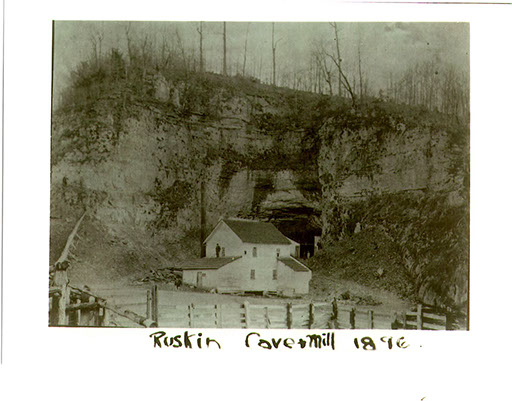
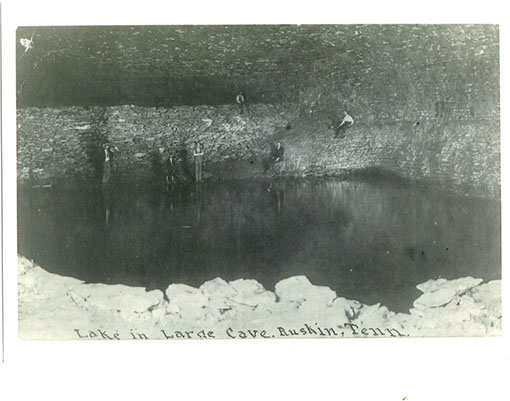

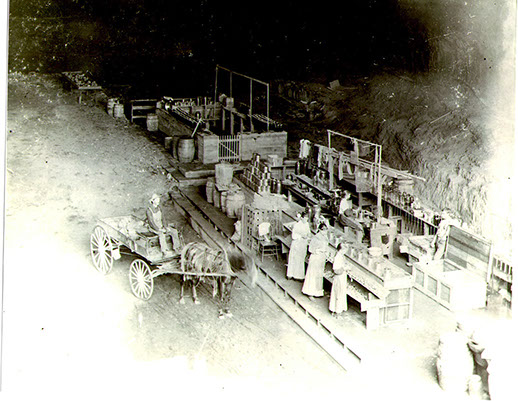
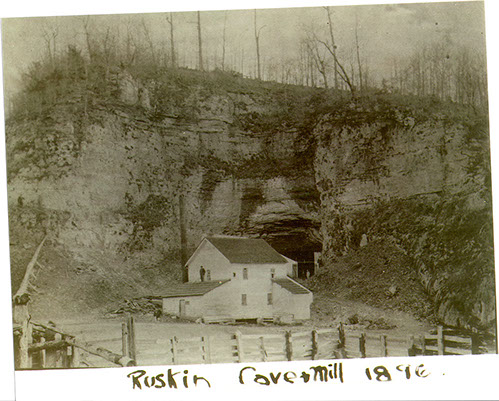
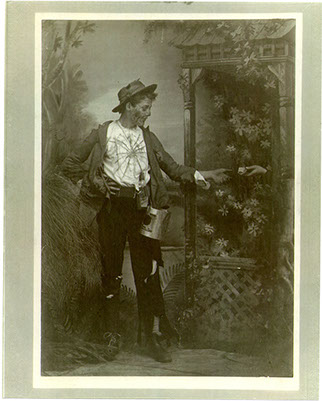
CLOSE
© The Ruskin 2017.
